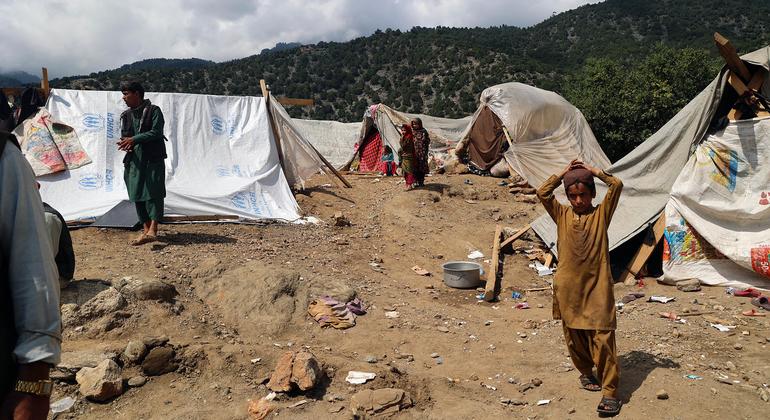
The Aftermath of a Magnitude 6 Earthquake
The recent earthquake in Afghanistan has brought about a humanitarian crisis, leaving communities to grapple with basic survival needs. The earthquake, which struck with a magnitude of 6, has devastated homes, farms, and livelihoods, leaving families with absolutely nothing. The head of strategy for OCHA in Afghanistan, Shannon O’Hara, reported from Jalalabad, painting a stark picture of the conditions just days after the disaster and its devastating aftershocks. The impact is widespread, with nearly 40,000 people affected and over 5,000 homes destroyed. The destruction is not limited to property; it has shattered lives, leaving families to rebuild amidst the ruins.
Humanitarian efforts are underway, but challenges persist. Reaching the affected areas is a significant hurdle, with difficult terrain and limited infrastructure hindering aid delivery. The narrow, one-way roads, often blocked by landslides and heavy traffic, add to the complexity. The journey itself can take hours, and first response teams often have to travel for extended periods on foot to reach those in need. Despite these obstacles, aid workers are working tirelessly to provide assistance, prioritizing those most vulnerable, including women, children, and people with disabilities.
The Vulnerable at the Forefront of the Crisis
In Afghanistan, where women and girls have been marginalized, the earthquake has intensified their hardships. Women and girls are bearing the heaviest burden, a trend seen in previous crises. The UN reproductive health agency, UNFPA, estimates that 11,600 pregnant women have been affected. This is particularly concerning given the country’s high maternal mortality rates. OCHA is focusing on ensuring women are represented in health teams and aid distributions, providing essential support services. This includes nutrition, psychosocial support, and other counseling services. The aim is to provide comprehensive care and address the specific needs of women and girls in these challenging times.
The destruction of homes and infrastructure has left families exposed to the elements, increasing the risk of disease outbreaks. The lack of clean water and sanitation, coupled with the practice of open defecation in many communities, raises serious health concerns. The potential for a cholera outbreak is alarming. While UN agencies are distributing meals and sanitation kits, the scale of the need requires further action. The affected communities are struggling to meet their basic needs, highlighting the urgency of the situation.
Challenges in Aid Delivery and the Looming Threat of Winter
The challenges extend beyond reaching the affected communities. The potential for heavy rain and aftershocks threatens to disrupt humanitarian efforts, potentially causing further displacement and loss of life. The approaching winter season poses an additional threat, with snow expected to block vital roads, further isolating communities. Urgent action is needed to prevent the compounding of this tragedy. Additional funding is required to support life-saving supplies and emergency response plans.
The World Health Organization (WHO) has prepositioned and delivered nearly 80 metric tonnes of emergency health supplies to the country since the disaster. The newly arrived cargo includes trauma and emergency surgery kits, primary health care kits, noncommunicable disease kits, and essential medicines. These supplies will be dispatched to health facilities and mobile health teams in the hardest-hit areas. This effort is critical to addressing immediate health needs and providing life-saving care to those affected by the earthquake.
A Call to Action: Ensuring Survival and Preventing Further Loss
The situation in Afghanistan demands immediate and sustained support. The humanitarian community is working to address the urgent needs of the affected population, but the challenges are immense. The international community must step up its efforts to provide additional funding and resources to support ongoing relief operations. Without immediate action, the weeks ahead risk compounding this tragedy with preventable disease outbreaks, further displacement, and additional loss of life. The focus must remain on providing essential aid, protecting the most vulnerable, and ensuring the survival of these communities.
Conclusion
The Afghanistan earthquake has created a dire situation, demanding immediate attention and significant support. The stories from the affected regions paint a picture of desperation and resilience. From the destruction of homes and livelihoods to the challenges of delivering aid and the looming threat of winter, the needs are substantial. The international community must act now to provide the necessary resources and support to help these communities survive and rebuild their lives. Failure to act swiftly will only worsen the existing crisis, leading to further suffering and loss. The goal is to ensure these communities can overcome this tragedy and build a better future.

